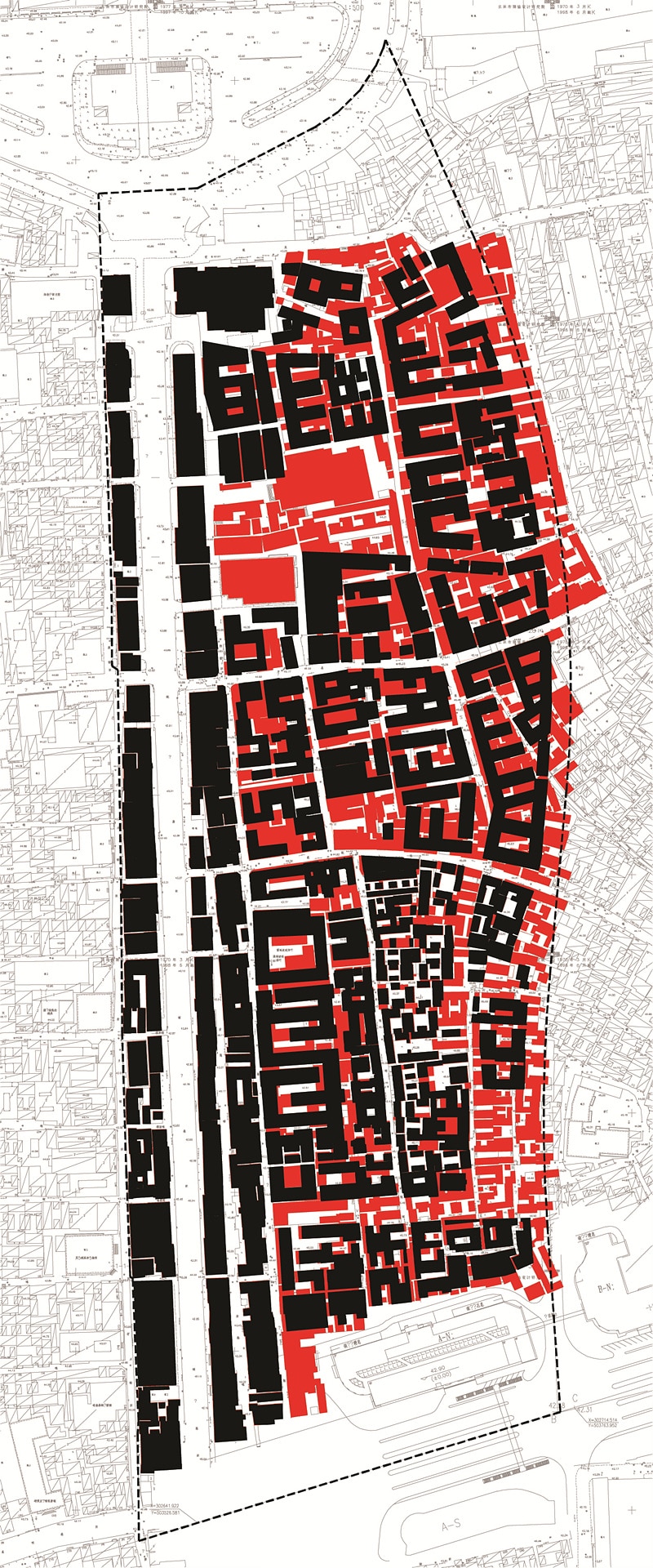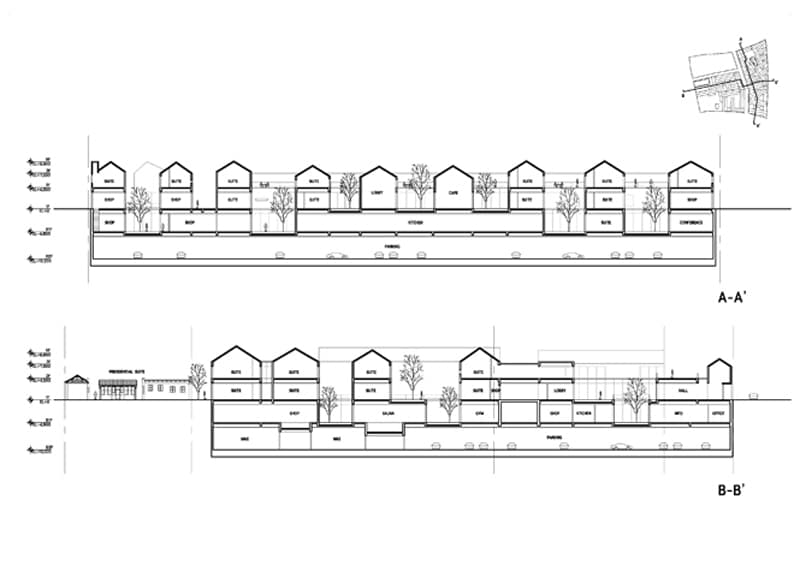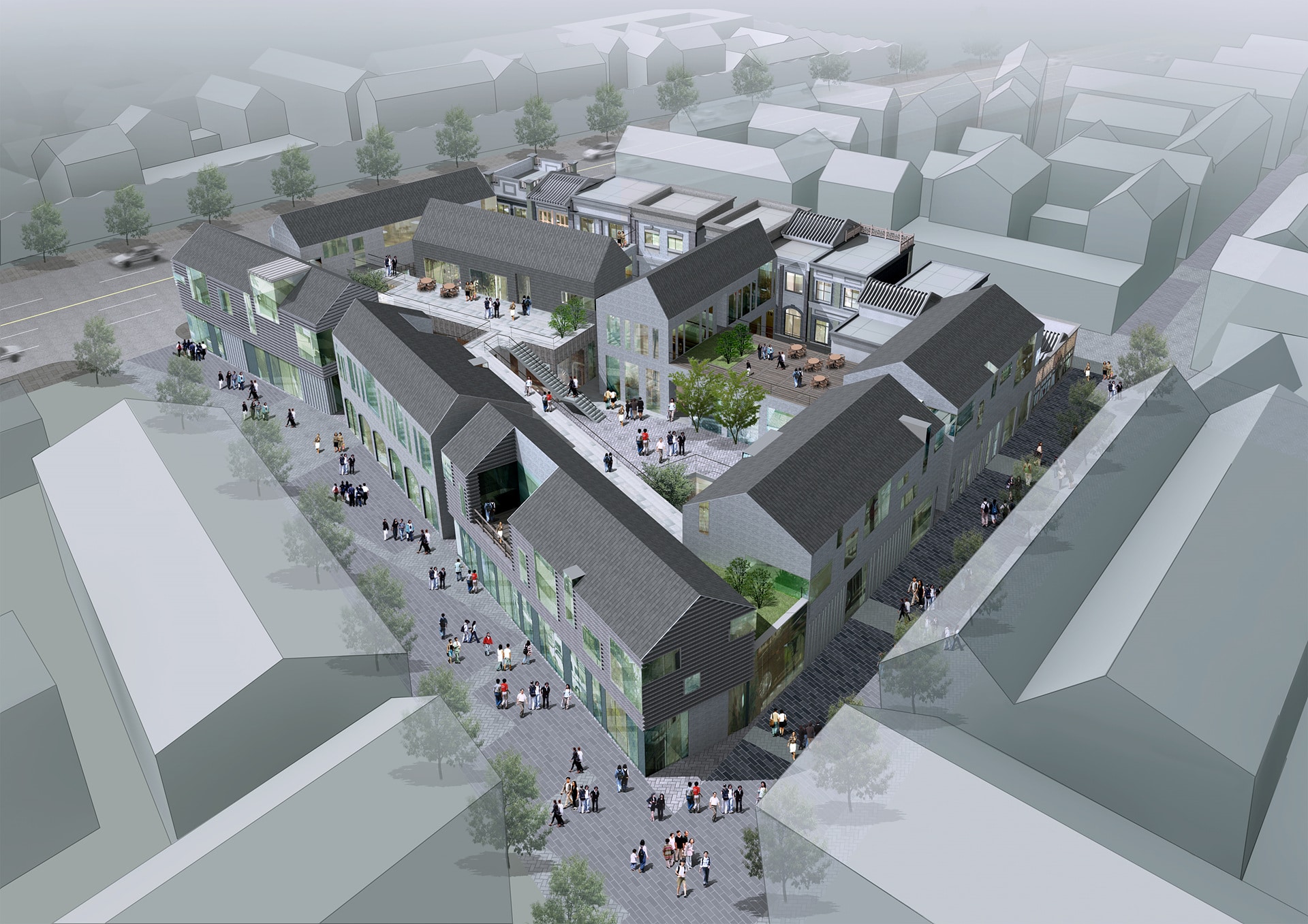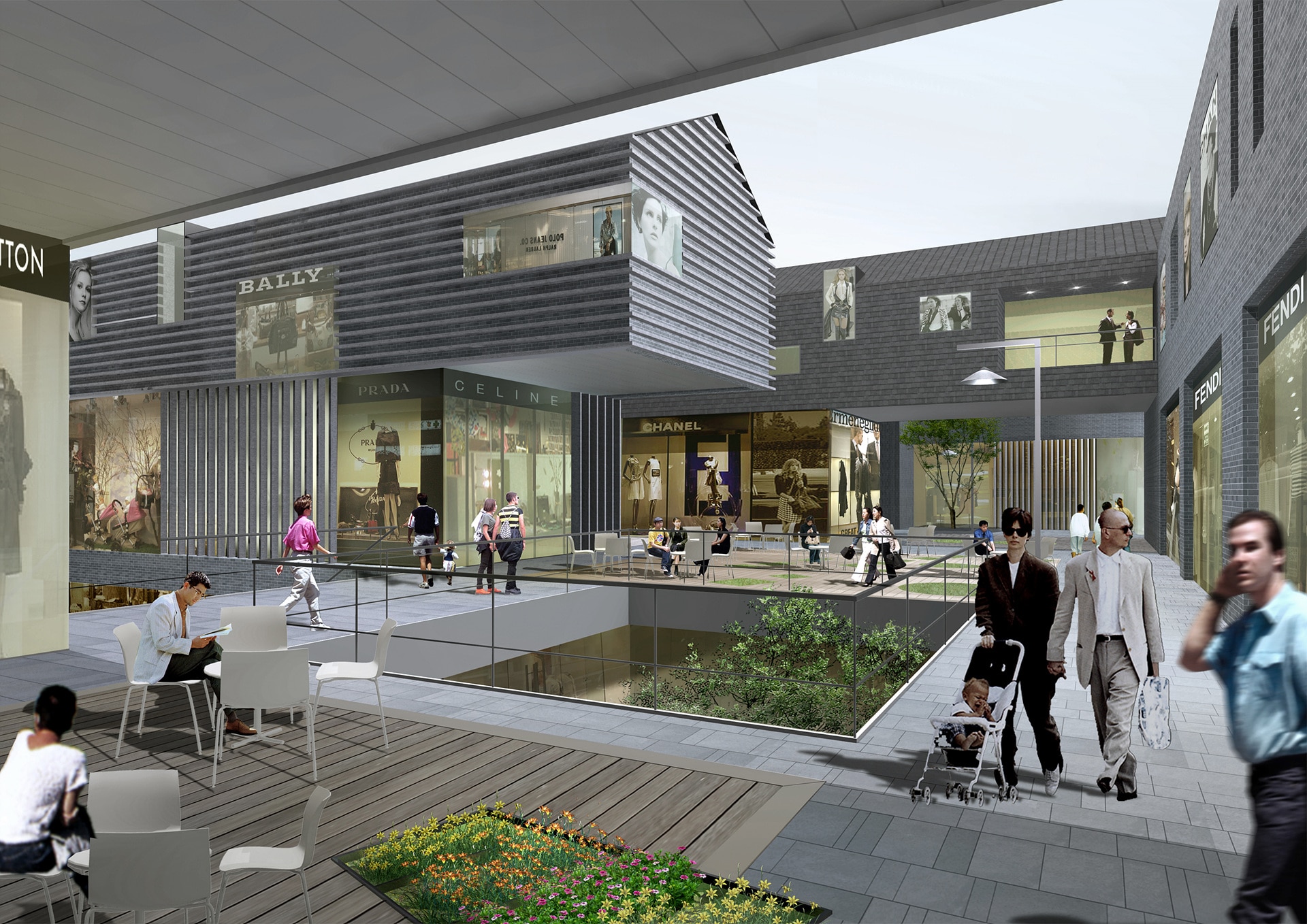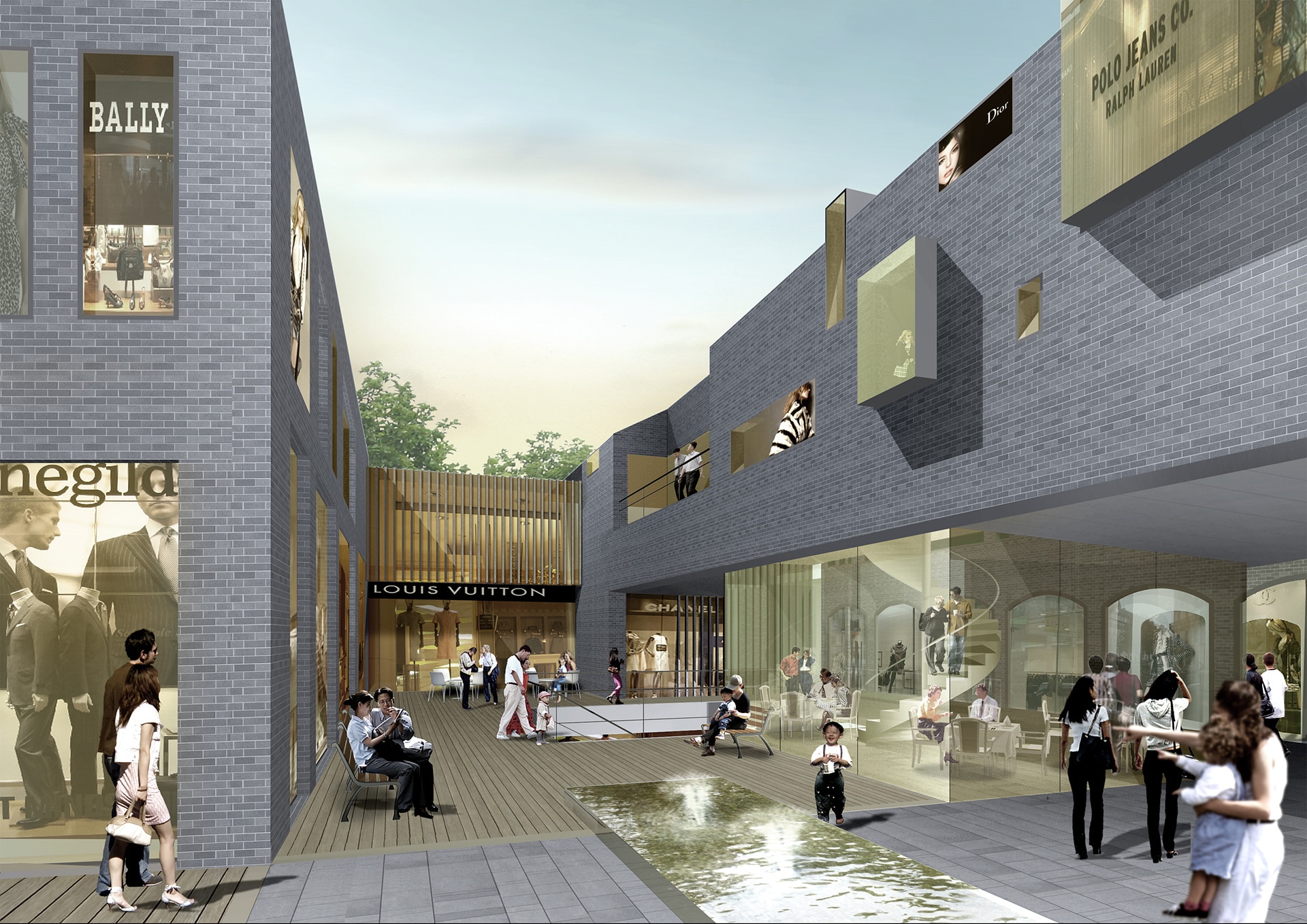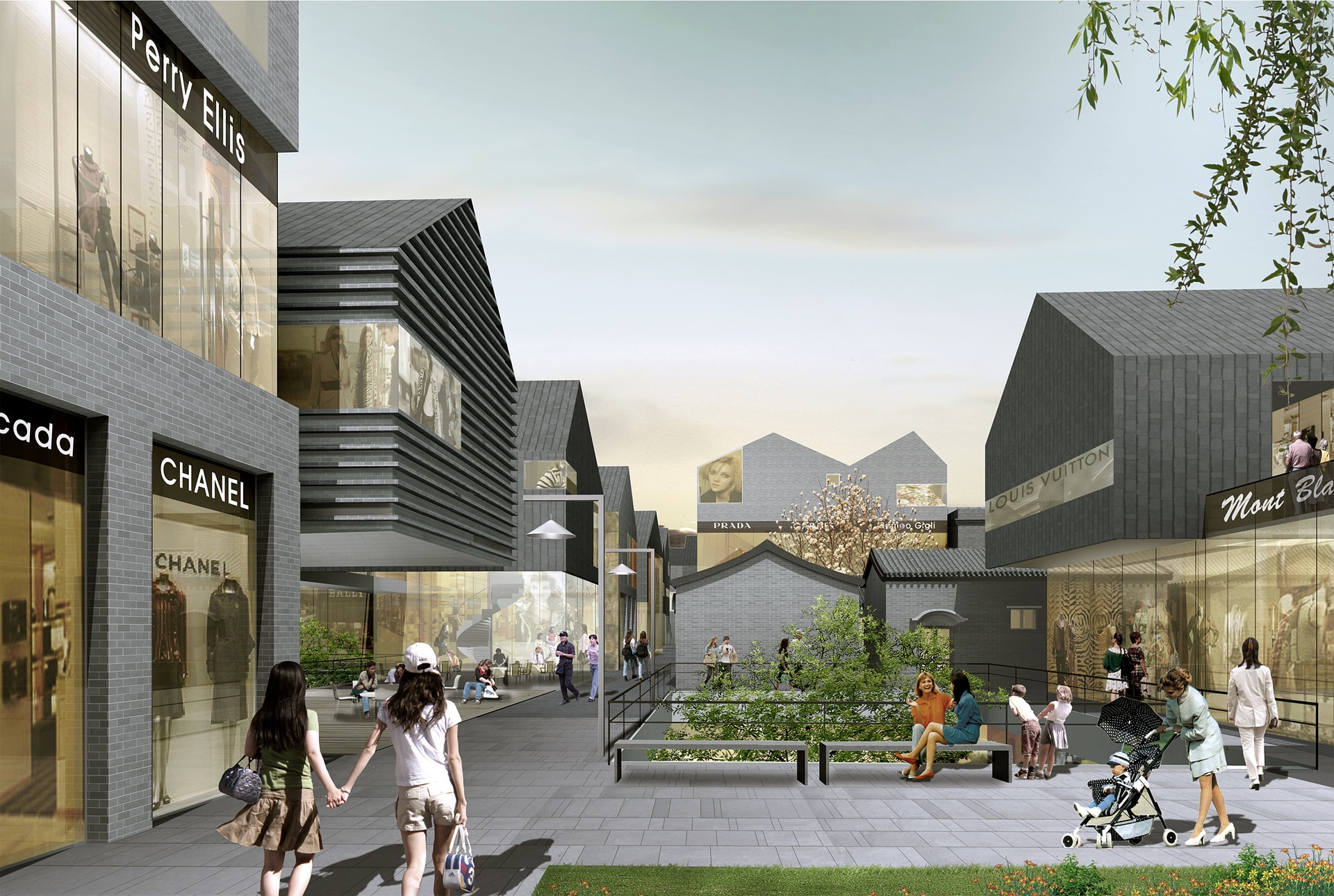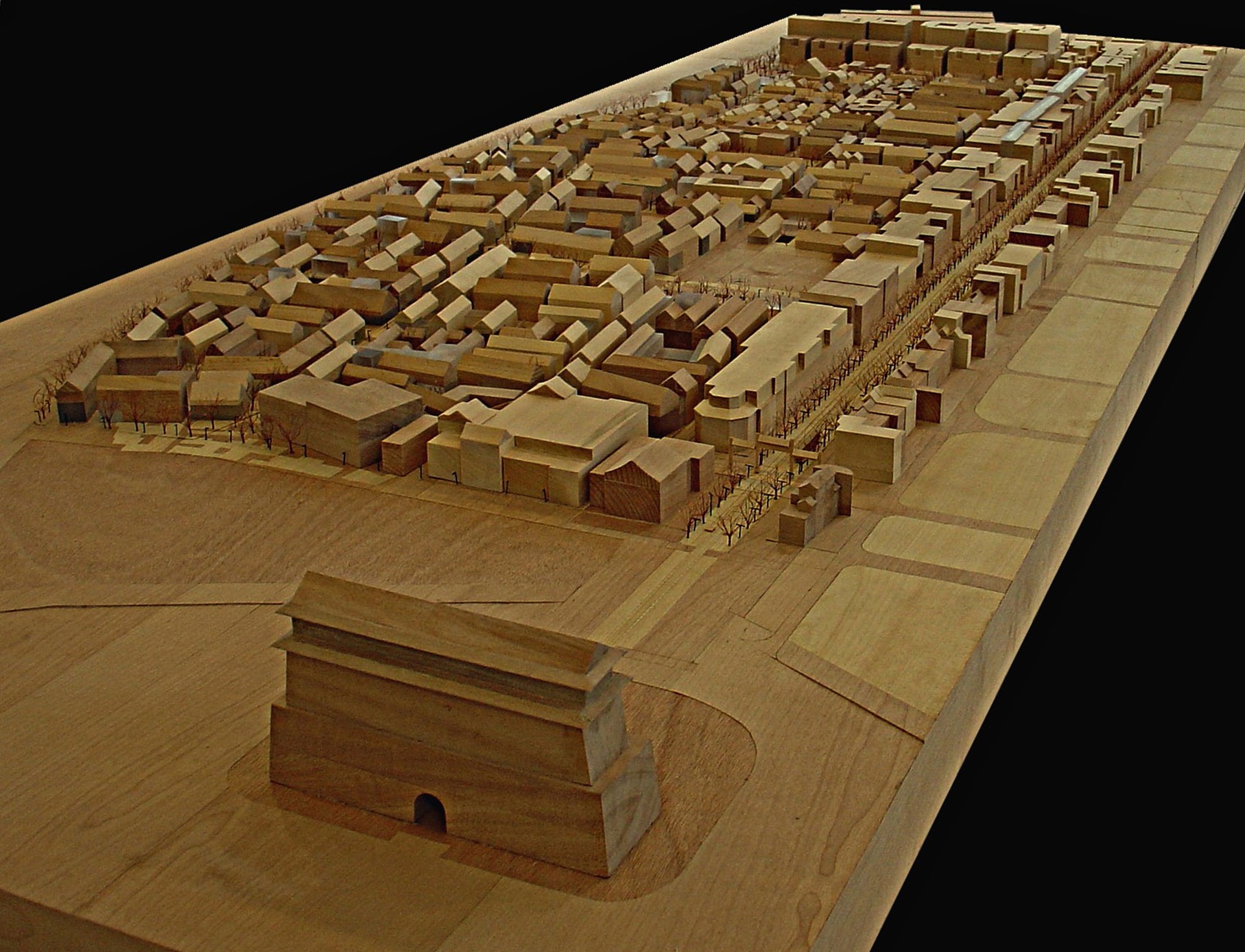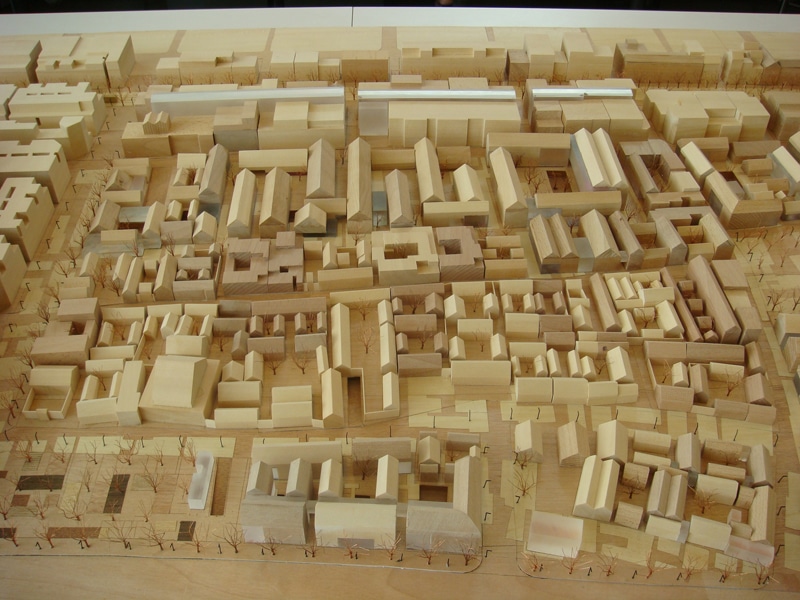Qianmendajie Historical Area Preservation and Regeneration Plan Project
| 완공년도 | 2008 |
| 위치 | 중국 베이징 |
| 대지면적 | 224,029.00m² |
| 연면적 | 359,240.00m² |
| 완공년도 | 2008 |
| 위치 | 중국 베이징 |
| 대지면적 | 224,029.00m² |
| 연면적 | 359,240.00m² |
2007년 어느 날, 북경의 건축주가 이 프로젝트에 대해 상의를 해왔을 때 나는 적지 않게 흥분했다. 역사적으로 북경에서 가장 중요한 지점의 하나인 전문대가의 재개발이라는 작업은 아마도 모든 건축가에게도 가장 매력적 프로젝트일 것이다. 그럼에도 나는 이런 류의 프로젝트에 가장 많은 관심을 갖는 건축가라고 강변하고 싶었다. 북경 자금성의 배치축은 북경의 도시적 주축일 뿐 아니라 중국인들의 정신적 축이며 국가의 상징축이다. 이 축선 위에 놓인 전문대가(前門大街)는 황제가 천단에 제사를 지내기 위해 지나가는 길로 천자의 길이라고 불렸으며 이 축은 지금은 자금성 북쪽의 올림픽 공원까지 연장되었다. 이 전문대가 일대는 북경의 역사와 기록을 같이한다. 자금성을 출입하기 위한 거점으로서 이 지역은 상업의 중심지였으며 옛 부터 지방 현들의 출장관리나 유학생들이 자기네 전통적 풍습을 유지하면서 거처를 형성한 곳으로 북경고유의 건축형식≫O 아니라 그 해당지역의 건축도 존재한다. 갈아 800m의 전문대가를 포함하여 동쪽의 7만평에 이르는 지역이 재개발 대상 구역이었다. 전통적 가옥인 사합원도 아직 남아 있지만 대부분은 민국시대 이후 변형된 주거구조를 가지고 있었고 일부는 근대화 과정에서 파괴되어 양식건물이 들어서 있었다. 지난 몇 년 사이 도시풍경을 천지개벽하듯 바꾼 북경은 그 개발과정에서 수많은 전통적 주거지역인 후통거리를 사라지게 하였으나, 이 지역은 지정학적으로도 반드시 전통적 풍모를 보전해야 할 이유가 중요했으므로 대단히 엄격한 도시계획 규정을 만들어 놓고 있었다. 나는 첫 번째 현장을 방문하여 거의 모든 집들을 들여다 보았다. 주민들은 이미 소개되어 마치 폐허지처럼 된 빈 집들을 쏘다니며 나는 놀라움을 금치 못하였다. 전통적 사합원에 민국시대 이후 여러 세대가 거주하여 변형시킨 그 공간구조들이 대단히 다양하고 흥미진진했던 것이다. 모든 공간은 고유했으며 특별했다. 길다랗거나 좁다랬고 깊거나 잘룩했으며 끊임없이 이어지거나 불현듯 막혔다. 거의 한나절을 그 공간들이 들려주는 이야기를 들으며 그 거리들을 탐닉했다. 공간의 보고였고 삶의 지혜였다. 그렇다. 그 자체가 다큐멘타리였고 드라마였으니 이는 충분히 보전할 가치가 있었던 것이다. 나는 디벨로퍼인 건축주에게 즉각 ‘landscript’에 대한 이야기를 하며 외부공간의 보전에 대해 강력한 의사를 표시했다. 새로운 프로그램인 쇼핑시설물들을 기획한 건축주에게 기존 건물규모의 유지를 의미하는 외부공간의 보전은 당혹스러운 제안이었겠지만, 시골에서 산 아름다운 공간적 기억을 떠올린 영민한 건축주는 내 제안을 받아들였다. 그녀는 만리장성 프로젝트의 건축주였던 장신(Zhang Xin)여사였다. 우선 나는 기존 현황의 그림을 그렸다. 과연 그 그림은 대단히 정교한 공간조직으로 나타났다. 도로들은 2m도 채 되지 않는 게 대부분이었지만 굴곡진 형태로 다양한 공공영역을 형성하고 있었다. 그러나 재개발계획에서 설정된 폭 6m, 8m 도로가 그 조직들을 파괴하며 절단하는 상황을 받을 수 밖에 없었으며 또한 프로그램에서 요구하는 최소한의 실내공간 치수 준수도 무시할 수 없는 조건이었다. 우선 전체 조직을 분석하여 4가지의 도시유형(urban pattern)으로 구분할 수 있었다. 미로형(labyrinth)은 주로 변형된 사합원의 공간조직으로 가장 다양한 형태를 나타내며, 바코드형(bar-code)은 그 형태 그대로 새로운 프로그램을 수용할 볼륨이었으며, 비교적 온전한 전통가옥의 형태를 형성하고 있는 곳은 전통주거로 다시 복원될 수 있어 이를 영역형(precinct)로 이름하였고, 전문대가 변의 이미 집단화되어 있는 곳은 어반매쓰(urban mass)로 구분할 수 있었다. 이를 토대로 그린 새로운 배치도(검정색 그림)는 이미 익숙한 듯한 그림이었고 사실 이를 원래의 그림과 겹치면 많은 영역이 백색으로 나타나 기존의 공간조직을 가능한 한 많이 보전되었음을 알 수 있다. 혹시 멸실 되는 붉은색의 기존 조직은 바닥에라도 그 공간의 패턴이 새겨지도록 하였으므로 최소한 그 기억의 편린은 유지할 수 있을 것이다.
The Qian Men area which has long been recognized as the axis of Chinese spirit has an enormous significance because of its historical, geopolitical and cultural value. It is without a doubt one of most important historic heritages in china and indeed, the world. Within what was once the dense fabric of Hutongs surrounding the forbidden city , Qian Men stands with a very special character not only because of its location on the Emperor’s city axis and proximity to Tiananme n square, but also because of the complexity and richness of its urban fabric and its valuable architectural heritage. This area has not only traditional Beijing’s Hutong, but different styles of houses from other regions, since lots of people came to reside here near the Forbidden City over a long period of time. More recently, since, with the beginning of the Republic in the early 20th century, the big courtyard houses was allowed to be occupied by several families living together in, the space structure of the courtyard house which had until then a very precise and strict space composition has been changed into a more dense and occasional structures. Thereafter the area has become an accumulation of multiple layers of a rich architectural and urban heritage. Because of this abundant and varied spatial organization one can look at the area as a sort of collection of architectural spaces. It is a collection not only of types of buildings and spaces but of layers of history and people’s living- a magnificent historical and cultural landscape. Given this task, the new master plan should aim to not only the redevelopment but most importantly to the enhancing of a long tradition. The master plan should certainly not start from tabular Rasa but it should acknowledge the site of long history and cultural tradition. The question for any intervention in such a historically relevant site is how to connect those memories and traces within the newly planned roads and new programs. This is not an issue of only an architectural style but rather an issue of how to keep the memory of the urban fabric, of the Hutong alive in the way that they constitute the collective memory of the site. This is clearly a cultural and historical responsibility of the project According to Adorno, without historical remembrance there would be no beauty. The past, and with it the cultural landscape, would be accorded guiltlessly to a liberated humanity, especially free of nationalism. This document was described as design guideline for pr oviding a framework for a fruitful collaboration between different architects that would represent a wide range of approached to architecture. This variety of approaches however would recognize the common goal or commitment to the historic character of the area and to the importance of the network of public spaces. The content in this guideline is only about basic. Variations should be taken by architects under his/her careful considerations keeping the spirit of this guideline.

